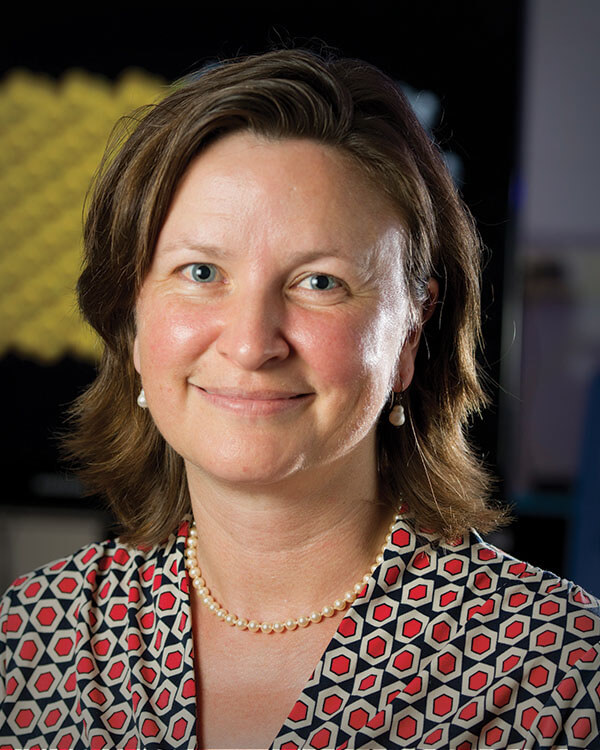Patricia Clark

Rev. John Cardinal O'Hara Professor of Chemistry & Biochemistry; Associate Vice President for Research; Concurrent Professor of Chemical and Biomolecular Engineering
Contact
443 Stepan Chemistry Hall
pclark1@nd.edu
574-631-8353
Research Cluster
Protein Folding in the Cellular Environment
Proteins are long flexible polymers, yet each must fold into a specific 3D shape in order to carry out its specific cellular function. Failure of protein folding mechanisms, often due to genetic mutations or adverse conditions such as thermal or chemical stress, is the cause of numerous human diseases including cystic fibrosis, Alzheimer's disease, juvenile cataracts, and many forms of cancer.
Almost everything that we know about how proteins fold is from test tube refolding studies using full-length, chemically denatured proteins. Yet in the cell, every protein is synthesized (translated by the ribosome) from N- to C-terminus by the ribosome. N-terminal portions of the protein can therefore begin to fold before the C-terminus has been translated. The introduction of a protein to its energy landscape for folding during translation is hence quite different from the energy landscape for the folding of a full-length polypeptide chain. Studies from our lab have revealed that folding intermediates populated during refolding in vitro can be populated quite differently during vectorial folding during translation, or secretion of an unfolded protein from one side of a membrane to the other. These changes to protein folding mechanisms can alter the likelihood of protein aggregation.
We exploit a diverse array of biophysical techniques in order to determine the effects of vectorial folding on protein folding mechanisms, the population of folding intermediates,and folding outcome. Of particular interest:
- Conformations of partially-synthesized and -secreted proteins
- Effects of varying translation (synthesis) rate on co-translational folding
- Effects of vectorial folding on protein misfolding and aggregation
- Folding and secretion of autotransporter proteins, the largest class of secreted virulence proteins from Gram-negative human pathogens
- Folding mechanisms for complex protein topologies, particularly those with beta-sheet structure
Publications
- "Properties of protein unfolded states suggests broad selection for expanded conformational ensembles" Bowman M.A.; Riback J.A.; Rodriguez, A.; Gao H.; Li J.; Sosnick T.R.; Clark P.L. Proc. Natl. Acad. Sci. 2020, In press.
- "Network analysis of synonymous codon usage" Newaz K.; Wright G.; Piland J.; Li J.; Clark P.L.; Emrich S.J. & Milenkovic T. Bioinformatics 2020, btaa603. DOI: 10.1093/bioinformatics/btaa603.
- "Water as a good solvent for unfolded proteins: Folding and collapse are fundamentally different" Clark P.L.; Plaxco K.W.; Sosnick T.R. J. Mol. Bio. 2020, 432(9), 2882-2889.
- "Synonymous codon substitutions perturb co-translational folding in vivo and impair cell fitness" Walsh I.M.; Bowman M.A.; Soto Santarriaga I.F.; Rodriguez A.; Clark P.L. Proc. Natl. Acad. Sci. U.S.A. 2020, 117(7), 3528-3534.